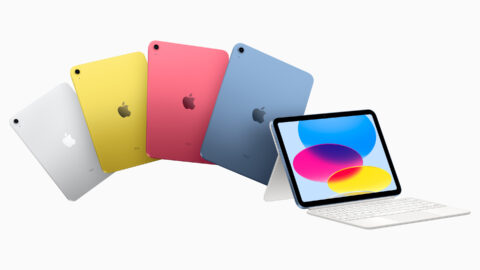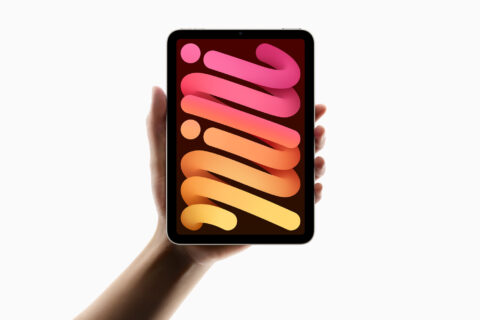Should you go mini, Air, Pro, or plain old iPad?
In 2010, there was just the iPad. Apple’s tablet was a revolutionary device – a large touchscreen canvas on which to work and play. At the time, your only decision was how much storage you wanted.
These days, things aren’t so simple. There’s the standard iPad, the smaller iPad mini, and two sizes each of iPad Air and iPad Pro. Four distinct models, all with their own storage and screen variants to consider. It’s a minefield.
Which should you buy? Our guide helps you decide, outlining the pros and cons of each model, and who each type of iPad is best suited for.
Tight for time? Skip to the end for a lightning-fast overview on what to buy – and when to upgrade.
iPad (A16)
From: $349/£329 • 11in display • A16 chip • 128GB/256GB/512GB • Touch ID • USB-C / Last updated: March 2025
Best for: iPad newcomers, anyone on a budget, and getting some modern features for a lowish price

Upon release and at almost five hundred bucks, the 10th-gen iPad didn’t scream ‘entry level’. But in May 2024, it got a $100/£150 price cut, and the 2025 A16 iteration gets you even more bang for your buck. The result is a bit of a bargain.
Compared to previous entry-level iPads, this one is a steal. The design is all-screen. There’s a USB-C port. The A16 chip is powerful enough for all but the most demanding apps and games. It was the first iPad to position the FaceTime camera at the center of the long edge – which the Air and Pro now also do. And the two speakers provide quality stereo in landscape, which is great when watching films.
So what’s the catch? The display lacks an anti-reflective coating – a cynical move to differentiate it from the Air, and a decision that also lumbers this iPad with the first-gen Apple Pencil or 2023’s USB-C model rather than superior options. Additionally, this is (bizarrely) the sole mobile device Apple sells that doesn’t support Apple Intelligence. Although you might see that as a plus.
So if you can deal with the display, don’t care about the best Apple Pencil, and don’t need the raw power of a Pro, this is the iPad to buy.
Pros: modern design; affordable; good enough for most tasks
Cons: reflective screen; no Apple Intelligence (if you care)
iPad mini (A17 Pro)
From $499/£499 • 8.3in display • A17 Pro chip • 128GB/256GB/512GB • Touch ID • USB-C / Last updated: October 2024
Best for: a pocketable iPad for media consumption

With smartphones increasing in size, the iPad mini might feel redundant. But it can be a boon in the right hands.
The A17 Pro chip is good enough for pretty much any iPad app or game, although versatility can be curtailed by the screen’s dimensions. This is a great reader for ebooks but small for comics. Some games are fine; others are fiddly to play. It’s fun for YouTube but not for movies. We happily sketched using Procreate (this iPad supports the Apple Pencil Pro), but this isn’t an iPad for writing or responding to emails.
The thing is, it’s hard not to fall in love with this iPad, once it’s in your hands. The screen is the sharpest of any Apple tablet (even if it’s still 60Hz and everything is scaled down and smaller than on other iPads) and it’s extraordinarily light.
It largely nails the original aim of the iPad: a consumption-oriented device between a smartphone and a laptop. If that closely aligns with your needs, the mini might be a winner. But check it out in person to determine if you’ll be happy with the small display.
Pros: small; light; powerful; the sharpest iPad display
Cons: can be fiddly to use; display is only 60Hz
iPad Air (M3)
From $599/£599 (11in) or $799/£799 (13in) • 11in/13in display • M3 chip • 128GB/256GB/512GB/1TB • Touch ID • USB-C • Smart Connector / Last updated: March 2025
Best for: anyone who wants to balance power and value

Since 2020, the iPad Air has effectively been a cut-down take on Apple’s flagship iPad Pro, including all of the things that really matter to most people.
It’s all screen. It supports the high-end Apple Pencil Pro (along with the USB-C Pencil) and is compatible with the Magic Keyboard. USB-C connects the tablet to a wealth of external devices. And the M3 chip provides laptop-grade performance, which means this iPad runs even the most demanding of apps and games. It also potentially means it’ll be supported for years longer than the standard iPad.
What’s missing is rarely a concern. The Pro’s smoother scrolling ProMotion display is a nice-to-have, but the Air at least has the anti-reflective display the entry-level iPad lacks. Two speakers instead of four isn’t a hindrance, unless you need stereo audio in portrait. No Face ID is a pity, but Touch ID in the top button works well. And there’s a 13in option for people who need a bit more screen space.
In short, the iPad Air gives you the best bits of Apple’s flagship tablet for a meaningfully lower outlay.
Pros: pro(ish) features for less outlay; anti-reflective display; 13in option
Cons: no ProMotion; no Face ID; pricey at 512GB/1TB storage tiers
iPad Pro (M4)
From $999/£999 (11in) or $1299/£1299 (13in) • 11in/13in display • M4 chip • 256GB/512GB/1TB/2TB • Face ID • USB-C (Thunderbolt) • Smart Connector / Last updated: May 2024
Best for: if you want the best iPad – and can afford one

The iPad Pro was the first to make good on Apple’s goal to make a computing device ‘disappear’. In 2018, it was redesigned as a rounded black rectangle – no Home button; thin, even bezels – that could become anything: sketchpad; TV; recording studio; editing suite; office set-up; games console…
The Pro’s latest incarnation is a premium product. The 120Hz ProMotion display is buttery smooth. A four-speaker system provides perfect audio in any iPad orientation. Thunderbolt offers pro-grade connectivity speed. Face ID is almost instant.
As of May 2024, the 11in and 13in models both have the same screen tech – a cutting-edge OLED with amazing contrast and rich colors. The 13in is ideal when you need a bigger canvas – it supports two full-size iPad apps in Split View – or a more full-size laptop-like experience with a Magic Keyboard. The latest revision should also feel less unwieldy, being 0.23lbs/102g lighter than its predecessor.
This is, in effect, the perfect iPad. But there are reasons to not buy one: it might be overkill and it’s definitely expensive – doubly so if you need to replace a 2nd-gen Apple Pencil or 2022 Magic Keyboard, since this Pro does not support either. So consider the iPad Air – or the iPad (A16) – if budget is a major factor and you don’t need cutting-edge tech. But if you want the best tablet Apple – or indeed, anyone – has to offer, this is it.
Pros: gorgeous design; unrivaled features and power; superb sound; stunning display
Cons: very expensive; overkill for most people; requires new accessories
TL;DR
Still undecided? Here’s a lightning-fast comparison for when to upgrade to the next model up:
- Get the iPad (A16) if on a budget or as a tablet for kids, or
- The iPad mini if you prefer something very small and light
- Buy an iPad Air over the iPad (A16) for the anti-reflective display and laptop-grade performance (or, again, the iPad mini if you want something smaller)
- Go for the iPad Pro for even beefier performance, the stunning display, and faster connectivity – or if you just want and can afford the best iPad
- And with either the iPad Air or iPad Pro, get a 13in if you need extra screen space or often want to use your tablet like a laptop

